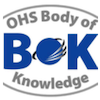Chapter 27: Gravitational Hazards
Abstract
The term ‘slips, trips and falls’ is treated almost as a single word in the workplace context with, in some cases, differentiation between a ‘fall on the same level’ and ‘a fall from a height.’ Such occurrences rank among the most significant causal factors in workplace injury and death in Australia, and there have been only relatively minor reductions in the injury rate in the last 10 years. Hazard identification, risk assessment and development of control strategies require an understanding of the physics of gravitational energy and the mechanisms of causation. This chapter uses injury statistics to examine the extent of the problem and the agencies of injury of slips, trips and falls (on the same level and from heights), and due to being hit by falling objects. It facilitates understanding of gravitational hazards with an overview of the relevant physics of gravity and the normal gait of a person, and examines the different mechanisms of a slip, a trip and a misstep. The importance of building design in prevention of injuries related to gravitational hazards is highlighted through a discussion on causation and scenario examples for control. The chapter concludes by discussing the role of the generalist OHS professional in preventing injuries from gravitational hazards.
Keywords: gravity, slip, trip, fall, misstep, falling objects,
First year of publication: 2012
Current Version: 2019
Chapter 27: Gravitational
Table of contents
| 1 | Introduction |
| 2 | Historical perspective |
| 3 | Extent of the problem |
| 4 | Understanding gravitational hazards |
| 4.1 | Physics |
| 4.2 | Slips |
| 4.3 | Trips |
| 4.4 | Missteps |
| 4.6 | Falling objects |
| 5 | Legislation and standards |
| 5.2 | Falls from heights |
| 5.3 | Falling objects |
| 6 | Control of gravitational hazards |
| 6.1 | Elimination and substitution |
| 6.2 | Barriers and defences |
| 6.3 | Application of control strategies |
| 7 | Implications for OHS practice |
| 8 | Summary |
| References |
Purchase the AUDIO chapter here through AIHS
OR
Neil Adams M.SafetySc, BSc(Hons), DipEd, MHFESA
Director, Neil Adams and Associates
Neil has worked as an ergonomist and safety management consultant for approximately 20 years and represents the HFESA on the Slip Resistance Standards as well as the Access Standards. He is an independent consultant who has lectured at UNSW and La Trobe University in workplace risk assessment. He has prepared over 2000 legal liability reports in compensation claims, including over 500 in slip/trip and fall cases and has advised various organisations as well as commercial and residential property owners in relation to preventing such incidents.
Peer reviewer
Max Hely BAppSc, BSc(Hons)
CPE Director, Safety Science Associates
Learning Outcomes: Gravitational Hazards
The OHS Body of Knowledge takes a conceptual approach which enables it to be applied in different contexts and frameworks. To optimise its value for education and professional development learning outcomes have been developed for each technical chapter in the Body of Knowledge.
The learning outcomes as described give an indication of what should be the capabilities of a new graduate OHS professional in the workplace. I t is up to those developing OHS education programs, OHS professionals planning their CPD or recruiters or employers selecting or developing people for the OHS function to consider the required breadth vs. depth
Podcast
3M Science of Safety Podcast: Ep 46: To slip or not to slip
Each year slips, trips and falls results in thousands of preventable injuries in the workplace. People must be able to move around the workplace safely, these incidents are a significant problem affecting every workplace, from the factory floor to the office and quite often can result in serious injury and lengthy amounts of time off work. Are you aware of slip, trip and fall risks and hazards in your workplace or work area?
Date: 2019
Presenter: Ranmalee De Silva
Source: https://3mscienceofsafety.libsyn.com/episode-46-to-slip-or-not-to-slip
Webinar
AIHS Webinar: Obligation holders for slips, trips and falls
Slips, trips and falls at level (STFAL) is the second most common mechanism of workplace injury in Australia. STFAL also presents significant public liability exposure for many organisations. Non-work-related injuries involving slipping and tripping results in a significant number of workdays lost. The information currently available for safety professionals does not articulate the range of obligation holders associated with STFAL risk management. Many obligation holders may not be aware of their contribution to the occurrence of STFAL injuries of others e.g. workers from another business, sub-contractors, clients and visitors. Nor may not be aware of their obligations and role in preventing these injuries. This presentation outlines the obligations and responsibilities of relevant duty holders. It also explores how each party can contribute to the prevention of occupational STFAL. Relevant Work Health and Safety legislation will be examined, in particular, general duties, concurrent obligations, consultation, and communication. Case law and investigation findings across a range of industries are used to illustrate the issues and considerations and practical measures to mitigate the risk shared.
Date: 2020
Presenter: Donna Lee
Source: https://youtu.be/wTKeLBG3pxk
Published 2012 Chapter 27 Gravitational

